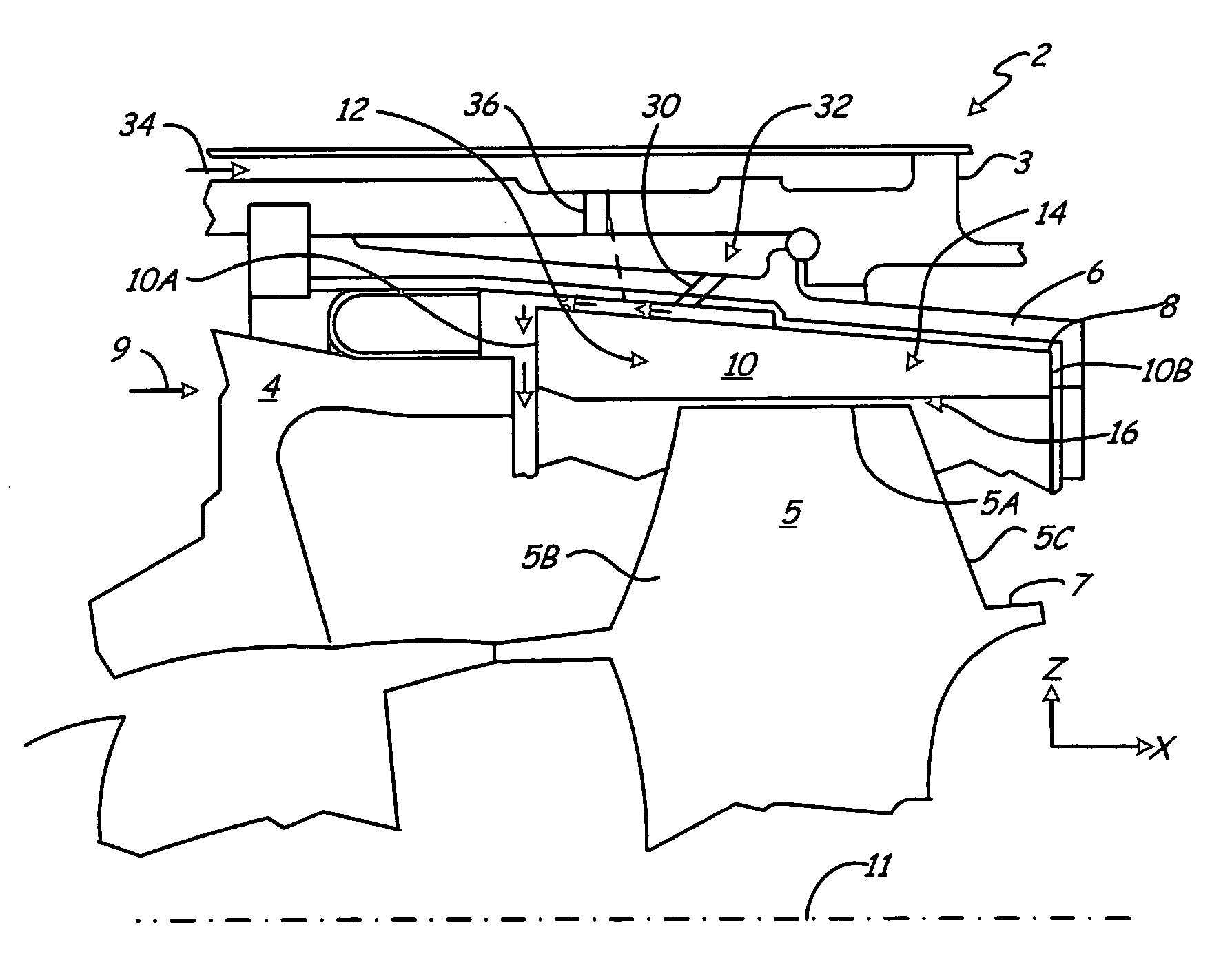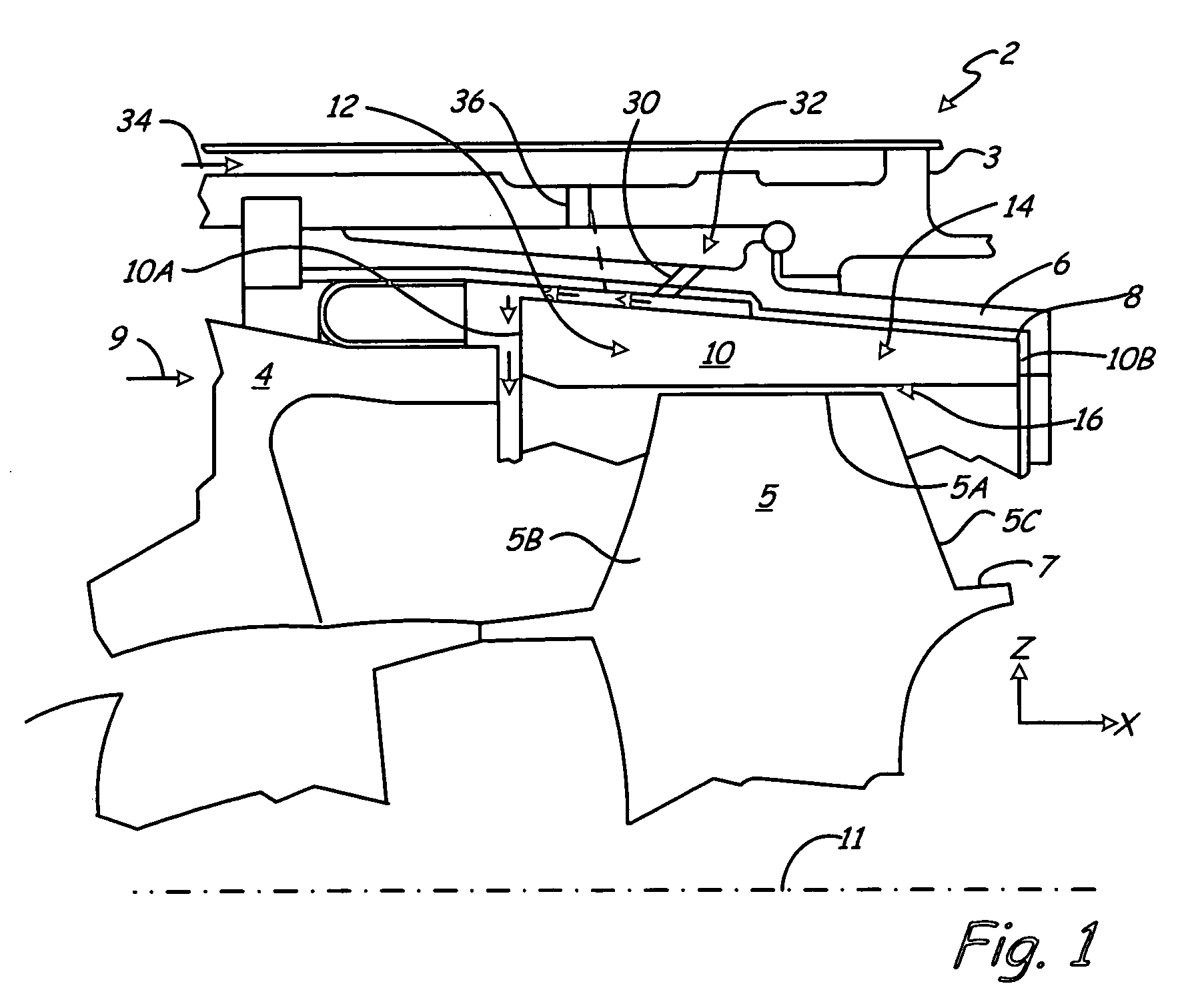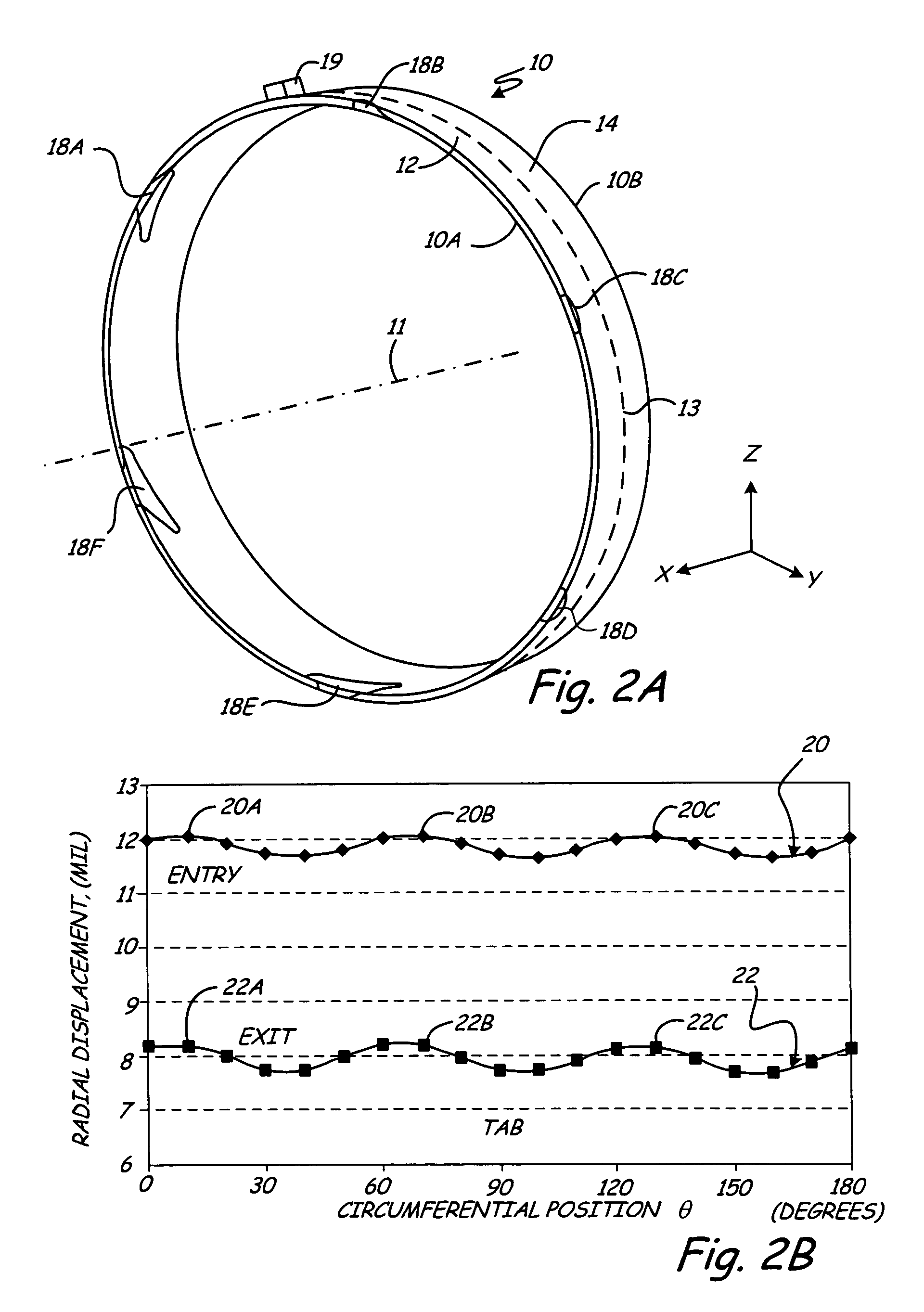Turbine shroud thermal distortion control
a technology for turbine shrouds and shrouds, which is applied in the field of outer shrouds, can solve the problems of reducing affecting the performance of the engine, so as to achieve uniform thermal growth, reduce the clearance between the shroud assembly and the turbine blade tip, and reduce the effect of energy consumption
- Summary
- Abstract
- Description
- Claims
- Application Information
AI Technical Summary
Benefits of technology
Problems solved by technology
Method used
Image
Examples
first embodiment
[0030]In the first embodiment, an inventive cooling system includes directing cooling air toward leading portion 12 of shroud 10 through cooling holes 30 in metal support 6, as indicated by arrow 32. More specifically, the cooling air is bled from the compressor section (using a method known in the art) through flow path 34, through cooling holes 36 in casing 3, and through cooling holes 30 in metal support 6. The cooling air then flows across leading portion 12 of shroud 10 and across leading edge 10A of shroud 10. In one embodiment, cooling air from cooling holes 30 in metal support 6 is directed at aft side 12A of leading portion 12 of shroud 10. Cooling leading portion 12 of shroud 10 helps even out the axial temperature variation across shroud 10 because leading portion 12 is typically exposed to higher operating temperatures than trailing portion 14. Although a cross-section of turbine stage 2 is illustrated in FIG. 1, it should be understood that multiple cooling holes 30 are...
second embodiment
[0036]FIG. 4A is a cross-sectional view of achieving substantially uniform thermal growth, where a coefficient of thermal expansion (CTE) of shroud 100 increases from leading edge 100A to trailing edge 100B. Orthogonal x-z axes are provided in FIG. 4A (which correspond to the orthogonal x-y-z axes shown in FIG. 2A) to illustrate the cross-section of shroud 100. Shroud 100 exhibiting a CTE that increases from leading edge 100A to trailing edge 100B may be formed by any suitable method, such as by depositing a plurality of layers having different CTE values, or gradually increasing the percentage of a high CTE material as the material for shroud 100 is deposited. In shroud 100 illustrated in FIG. 4A, plurality layers 102 of ceramic material are deposited, with each succeeding layer of material having a greater CTE value than the previously deposited layer of material. Layer 102A is closest to leading edge 100A of shroud 100, layer 102B is closest to trailing edge 102B, and layer 102C ...
third embodiment
[0040]FIG. 5 is a schematic cross-sectional view of shroud 200, which achieves substantially uniform thermal growth as a result of extending shroud 200 beyond width WBT of adjacent turbine blade tip. Specifically, extended portion 200A extends from main shroud portion 200B. During operation of a gas turbine engine, heat is typically transferred to shroud 200 by combustion gas. As blade 202 rotates, it incidentally circulates the hot gases towards main shroud portion 200B of shroud 200. Extended portion 200A, however, is subject to less heat transfer from blade 202 passing, because extended portion 200A is not directly adjacent to blade 202, and is therefore exposed to a lower heat transfer rate and encounters less thermal growth than main shroud portion 200B. Main shroud portion 200B is aligned with blade 202 and is in the direct path of the hot combustion gases as blade 202 passes under main shroud portion 200B. As a result, main shroud portion 200B undergoes a greater amount of th...
PUM
| Property | Measurement | Unit |
|---|---|---|
| temperature | aaaaa | aaaaa |
| temperature | aaaaa | aaaaa |
| slot width Ws | aaaaa | aaaaa |
Abstract
Description
Claims
Application Information
 Login to View More
Login to View More - R&D
- Intellectual Property
- Life Sciences
- Materials
- Tech Scout
- Unparalleled Data Quality
- Higher Quality Content
- 60% Fewer Hallucinations
Browse by: Latest US Patents, China's latest patents, Technical Efficacy Thesaurus, Application Domain, Technology Topic, Popular Technical Reports.
© 2025 PatSnap. All rights reserved.Legal|Privacy policy|Modern Slavery Act Transparency Statement|Sitemap|About US| Contact US: help@patsnap.com



